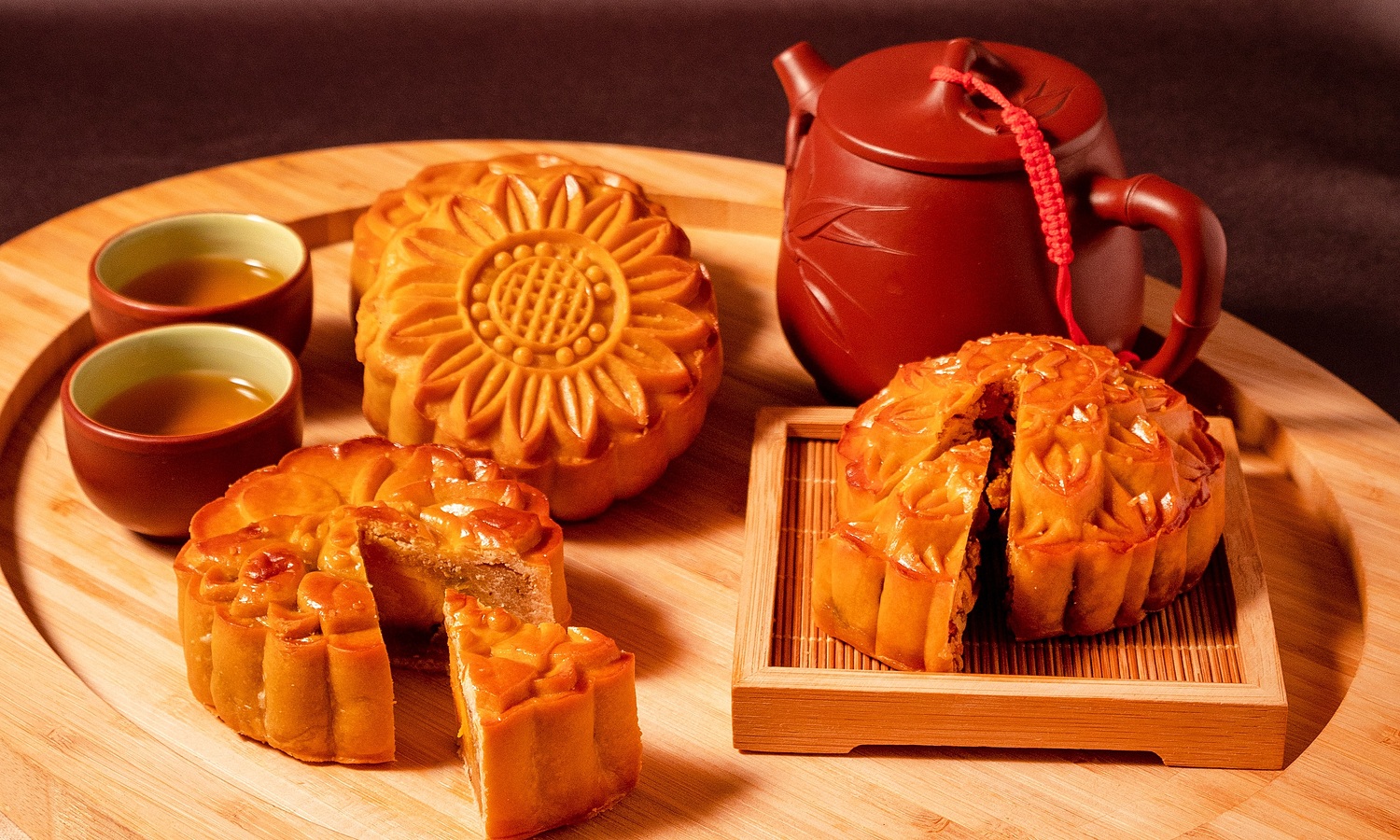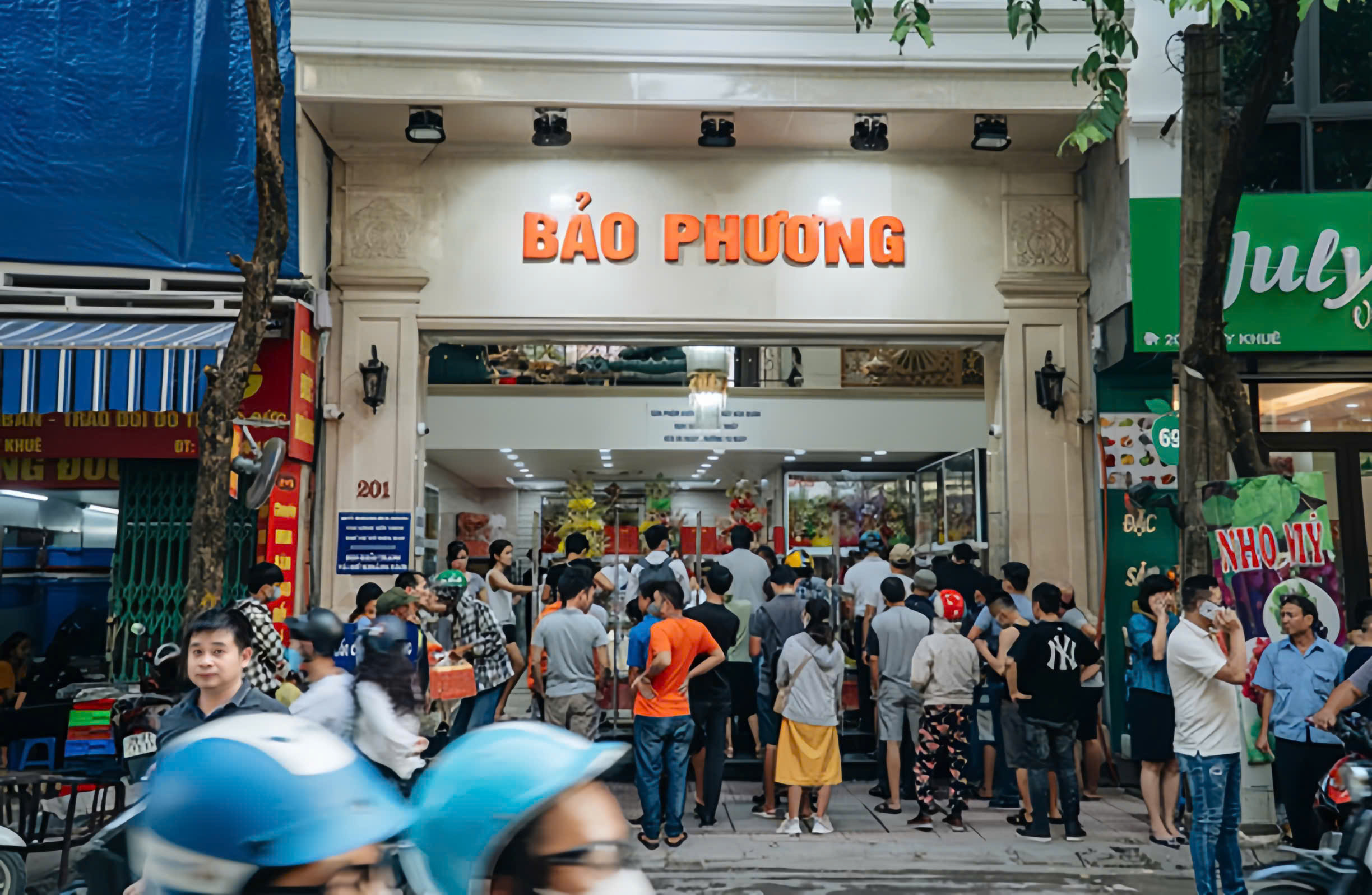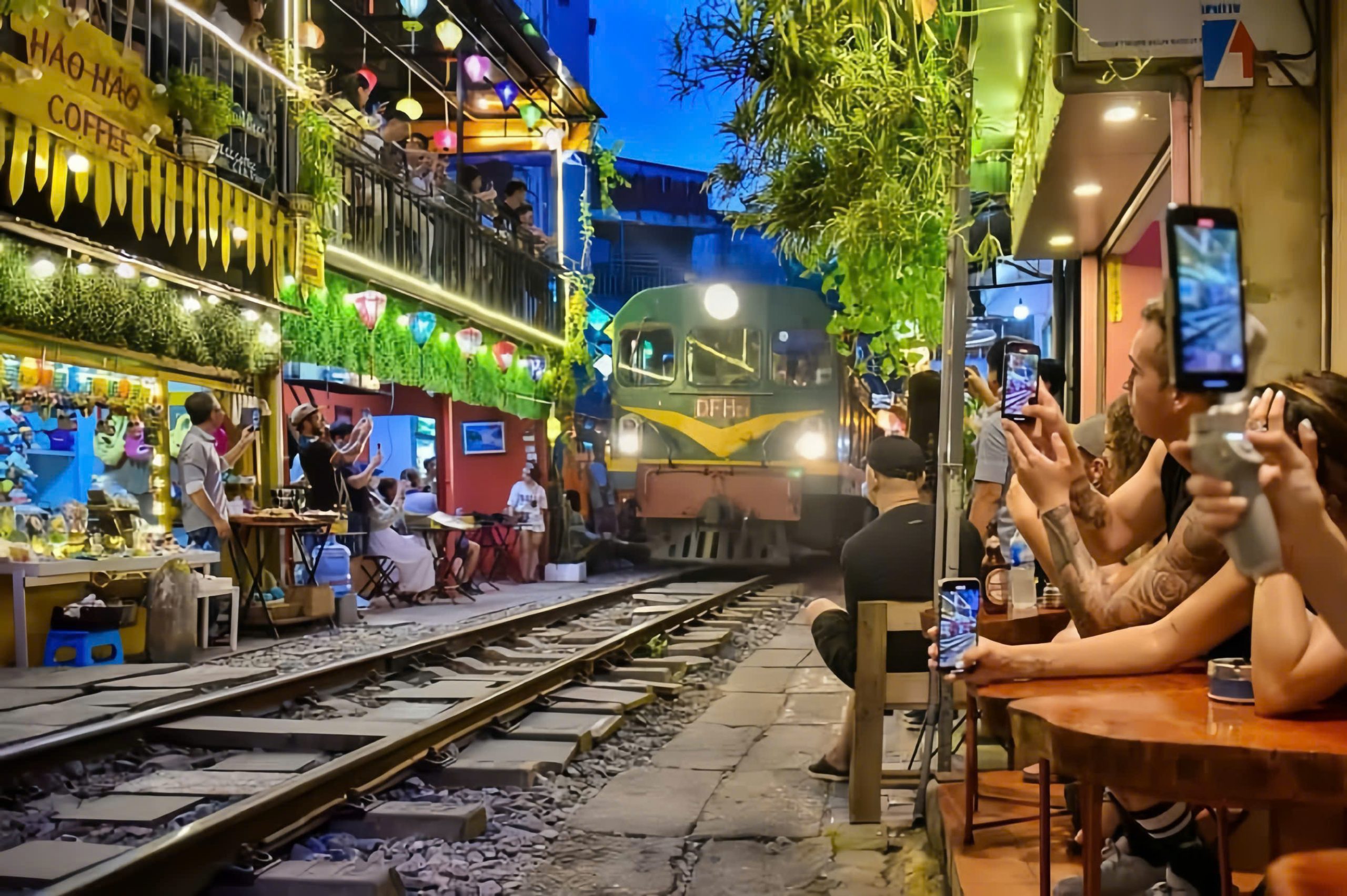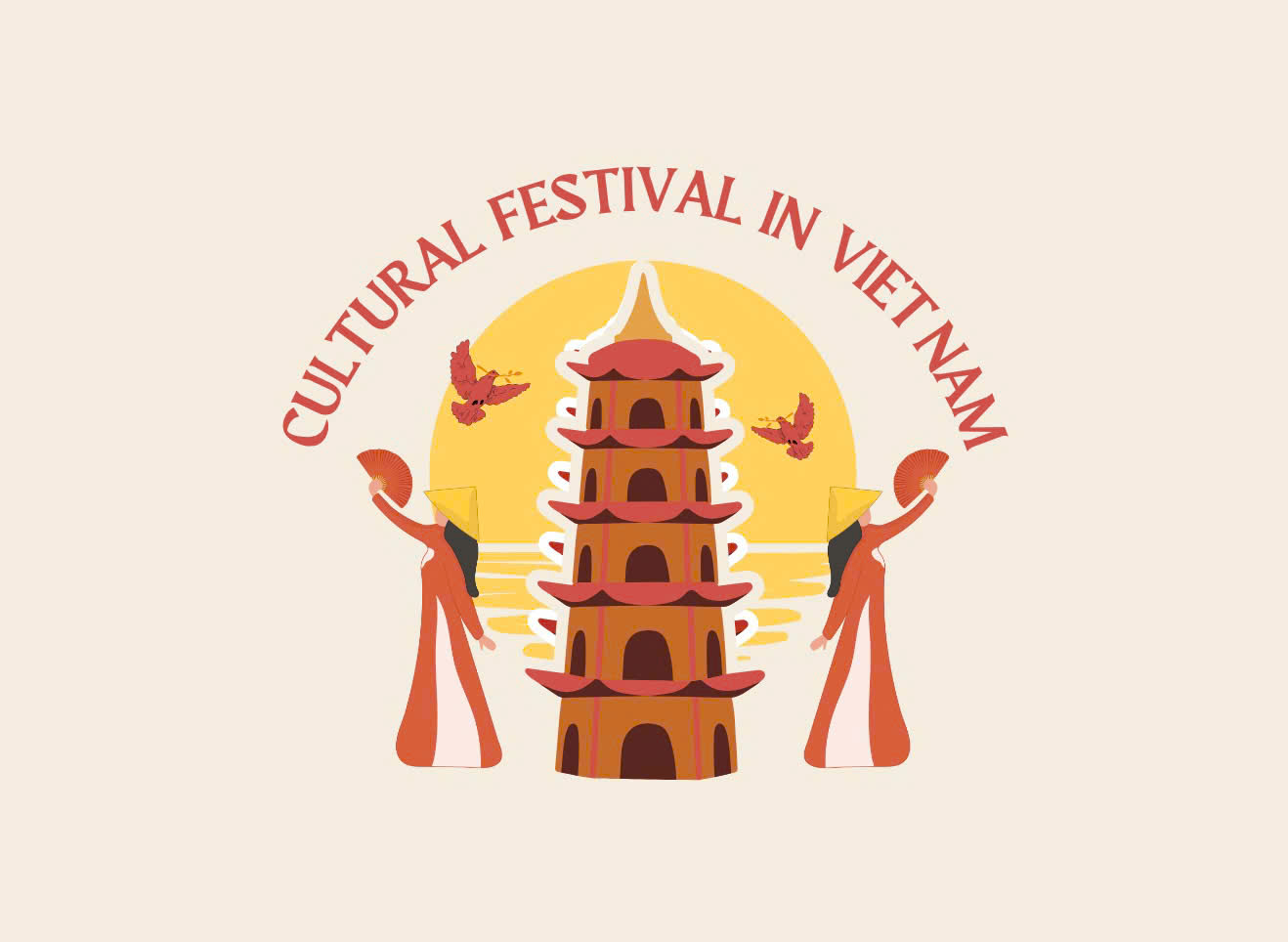MỤC LỤC NỘI DUNG
What Makes Mooncakes So Special in Vietnam?
If you visit Vietnam around September or early October, you’ll see shops and street stalls filled with beautifully wrapped mooncakes (bánh trung thu). These aren’t just festive treats—they’re symbols of family reunion, gratitude, and celebration.
In Vietnam, no Mid-Autumn Festival (Tết Trung Thu) is complete without mooncakes. Just like fireworks on Lunar New Year, they’re part of what makes the season so special.
Traveling during this time? PHM Travel offers unique experiences like visiting traditional mooncake bakeries, joining tastings, and exploring lantern-lit streets—so you can enjoy the festival like a local.

The Meaning Behind the Mooncake
Why are mooncakes such a big deal in Vietnam?
Because they’re more than just sweet treats. In Vietnamese culture, mooncakes are meaningful gifts—shared among family, friends, and even business partners during the Mid-Autumn Festival. Their round shape symbolizes unity and completeness, making them the perfect offering under a full moon.
Giving and receiving mooncakes is a heartfelt tradition. It’s about showing care, expressing gratitude, and staying connected, even when people are far apart.

Traditional Mooncakes: Taste of the Full Moon
There are two classic types of mooncakes you’ll find in Vietnam—and each has its own charm:
Bánh nướng, or baked mooncakes, are the most iconic variety. They have a shiny golden-brown crust that’s slightly firm on the outside, soft on the inside. The fillings? Classic and comforting—lotus seed paste, mung bean, roasted mixed nuts, and of course, the all-time favorite: salted egg yolk tucked right in the center.
They’re dense, flavorful, and packed with nostalgia—each bite feels like a connection to generations past.

On the other hand, bánh dẻo, or sticky rice mooncakes, are soft, chewy, and usually served cool. Made from glutinous rice flour, they have a snow-white appearance and a light, delicate texture. Fillings often include mung bean (green bean paste), lotus seed paste, or even salted egg yolk—similar to the baked version but with a more refreshing mouthfeel.
They’re perfect for those who enjoy something a little lighter, especially when paired with a cup of fragrant tea during a warm evening under the full moon.

Different regions may tweak the recipes or presentation slightly, but these two styles remain staples of Vietnamese Mid-Autumn flavor—especially when paired with a hot cup of tea on a breezy evening.
Where to Buy Mooncakes in Vietnam
If you’re looking to try authentic traditional mooncakes in Vietnam, there are plenty of beloved names to explore—both small family-run bakeries and long-standing national brands.
In Hà Nội, locals flock to Bảo Phương Bakery on Thụy Khuê Street every Mid-Autumn season. Their mooncakes are famous for their rich fillings—mung bean, lotus seed paste, salted egg yolk, and mixed nuts—and a crust that’s baked to golden perfection. The shop often has long lines, especially close to the festival, but many say it’s worth the wait.

In Hải Phòng, one local favorite is Tiệm bánh Đông Phương—a long-standing bakery known for its traditional mooncakes that locals look forward to every Mid-Autumn. Located on Cầu Đất Street, Đông Phương’s mooncakes feature familiar fillings like lotus seed paste, salted egg yolk, and mixed nuts, wrapped in a soft, golden crust.

Though it’s not a national brand, Đông Phương is beloved for its handmade quality and nostalgic flavors, often compared favorably to more famous names in Hanoi or Saigon.
In Ho Chi Minh City, one of the most iconic names is Như Lan, located on Hàm Nghi Street, District 1. This family-run bakery has been around for decades, and their traditional baked mooncakes—especially the mixed-nut versions with salted egg yolk—are a staple on every Saigonese Mid-Autumn table.

Among national brands, traditional mooncakes are still widely available from big names—such as Kinh Đô, Đồng Khánh, Hữu Nghị, hay Bảo Minh. These brands may produce at scale, but many of their mooncakes still follow familiar, time-honored recipes with fillings like lotus seed, mung bean, and salted egg yolk.
Whether you buy from a famous brand or a small neighborhood bakery, you’re not just getting a snack—you’re tasting a piece of Vietnam’s Mid-Autumn tradition.
Pro Tips for First-Time Tasting
Not sure where to start? Here are a few tips to enjoy mooncakes like a local:
- Try both types—bánh nướng (baked) and bánh dẻo (sticky rice)—to find your favorite. They’re quite different in texture and flavor.
- Not a fan of salted egg? Just ask for “không trứng muối” and you’ll get a version without it.
- Mooncakes are rich and filling, so don’t rush—cut them into small wedges and savor them slowly.
- And of course, pair your mooncake with a cup of green tea or jasmine tea. It helps balance the sweetness and makes the experience feel complete.
More Than Just a Cake
Whether you’re sitting under the full moon in a small Vietnamese village or unwrapping a mooncake box in your hotel room in Hanoi, this treat connects you to centuries of culture, family, and celebration.
So this Mid-Autumn Festival, don’t just look at the moon—taste it.
PHM Travel invites you to experience the festival like a local—with mooncake tastings, lantern-lit markets, and the warm, joyful spirit of Vietnam’s most magical night.


 English
English




